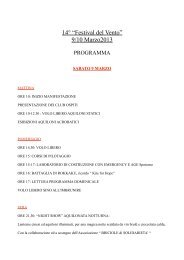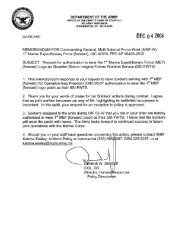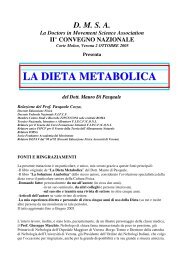Science vs. religion : what scientists really think - File PDF
Science vs. religion : what scientists really think - File PDF
Science vs. religion : what scientists really think - File PDF
You also want an ePaper? Increase the reach of your titles
YUMPU automatically turns print PDFs into web optimized ePapers that Google loves.
200 NOTES TO PAGES 81–8817. Bio 9, conducted July 25, 2005.18. Psyc 14, conducted September 9, 2005.19. Sociologists of science commonly discuss the “demarcation problem,” namelythe ways different boundaries between science and nonscience are drawn. In particular,see Downey, “Reproducing Cultural Identity in Negotiating Nuclear Power” ; Moore,“Organizing Integrity” ; Gieryn, “Boundary-Work and the Demarcation of <strong>Science</strong> fromNon-<strong>Science</strong>” ; and Turner, “Public <strong>Science</strong> in Britain.”20. Econ 8, conducted September 3, 2005.21. Chem 38, conducted May 17, 2006.22. Soc 22, conducted August 8, 2005.23. Bio 18, conducted September 15, 2005.24. Chem 8, conducted August 22, 2005.25. Phys 1, conducted June 17, 2005.26. Econ 8, conducted September 3, 2005.27. See Lamont and Molnar, “The Study of Boundaries across the Social <strong>Science</strong>s,”where they explain the need for more social-science work that examines the conditionsunder which boundaries are transgressed and changed. This book attempts to be suchan example.Chapter 61. See Roberts and Turner, The Sacred and the Secular University . Princeton Universityis not counted in the number of universities with active divinity schools, becausePrinceton Theological Seminary is not organically related to the university. The studieduniversities with active divinity schools on campus are University of Chicago,Duke, Yale, and Harvard. Some, however, might argue that the presence of divinityschools and/or departments of religious studies as separated from other disciplines andfields is evidence that secularization has occurred on university campuses. See, forexample, Ammerman, “Christian Scholarship in Sociology: Twentieth Century Trendsand Twenty-First Century Opportunities.” See also Hart, “The Troubled Soul of theAcademy: American Learning and the Problem of Religious Studies.”2. See, in particular, Reuben, The Making of the Modern University .3. For more about changes in the Harvard seal from an evangelical Christianperspective see www.markdroberts.com/htmfiles/resources/harvardironies.htm .4. See Bok, Universities in the Marketplace .5. Historian James Gilbert argues, though, that nuclear proliferation after WorldWar II resulted in a massive cultural shift, where the general public began to seescience as morally culpable and even needing <strong>religion</strong> for moral grounding. See Gilbert,Redeeming Culture .6. For more on Hollinger’s ideas, see Hollinger, “Religious Ideas.” For more fromReuben, see Reuben, The Making of the Modern University . Reuben describes these moralreforms as a series of stages, including the religious, occurring roughly from 1880 to 1910; thescientific, from 1900 to 1920; and the humanistic and extracurricular, from 1915 to 1930.
















